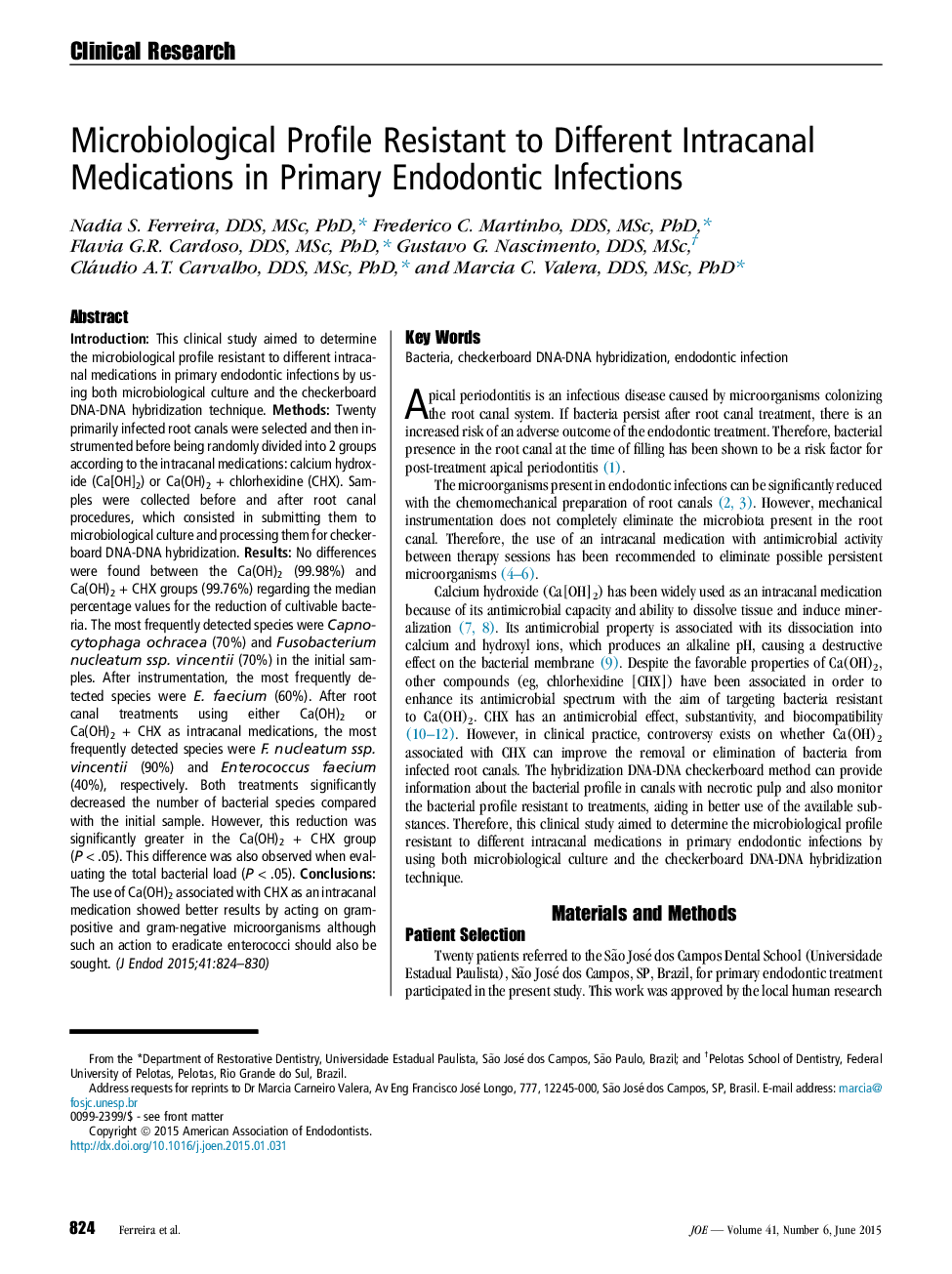| Article ID | Journal | Published Year | Pages | File Type |
|---|---|---|---|---|
| 3148169 | Journal of Endodontics | 2015 | 7 Pages |
IntroductionThis clinical study aimed to determine the microbiological profile resistant to different intracanal medications in primary endodontic infections by using both microbiological culture and the checkerboard DNA-DNA hybridization technique.MethodsTwenty primarily infected root canals were selected and then instrumented before being randomly divided into 2 groups according to the intracanal medications: calcium hydroxide (Ca[OH]2) or Ca(OH)2 + chlorhexidine (CHX). Samples were collected before and after root canal procedures, which consisted in submitting them to microbiological culture and processing them for checkerboard DNA-DNA hybridization.ResultsNo differences were found between the Ca(OH)2 (99.98%) and Ca(OH)2 + CHX groups (99.76%) regarding the median percentage values for the reduction of cultivable bacteria. The most frequently detected species were Capnocytophaga ochracea (70%) and Fusobacterium nucleatum ssp. vincentii (70%) in the initial samples. After instrumentation, the most frequently detected species were E. faecium (60%). After root canal treatments using either Ca(OH)2 or Ca(OH)2 + CHX as intracanal medications, the most frequently detected species were F. nucleatum ssp. vincentii (90%) and Enterococcus faecium (40%), respectively. Both treatments significantly decreased the number of bacterial species compared with the initial sample. However, this reduction was significantly greater in the Ca(OH)2 + CHX group (P < .05). This difference was also observed when evaluating the total bacterial load (P < .05).ConclusionsThe use of Ca(OH)2 associated with CHX as an intracanal medication showed better results by acting on gram-positive and gram-negative microorganisms although such an action to eradicate enterococci should also be sought.
